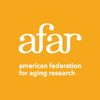 by Steven N. Austad, Ph.D. - Scientific Director, American Federation for Aging Research (AFAR) , Distinguished Professor and Chair, Department of Biology, University of Alabama at Birmingham
by Steven N. Austad, Ph.D. - Scientific Director, American Federation for Aging Research (AFAR) , Distinguished Professor and Chair, Department of Biology, University of Alabama at Birmingham
A single 250 calorie bar of dark chocolate when eaten in combination with a low carbohydrate diet will accelerate weight loss by about ten percent.
Sounds good, yes? Maybe too good? But a study demonstrating exactly this was published last year in the International Archives of Medicine, an impressively scientific sounding journal title.
If adding calories while simultaneously accelerating weight loss, has your nonsense detector blinking furiously, then you are obviously not used to splashing around in the dismal swamp of so-called diet science--a place where you're likely to bump into a few actual scientists, but many more crooks, cranks, and con men.
It turns out that the study in question was a real scientific study-- a really bad, purposely bad -- scientific study concocted by a science journalist, John Bohannon and two German filmmakers. They wanted to expose how a dreadful piece of science with an eye-catching message could be published in a shoddy scientific journal and then turned into big headlines by shoddy journalism.
They were successful beyond their wildest dreams. The chocolate diet news made headlines worldwide.
Thank goodness, claims that chocolate can restore youth are rare. However, legitimate aging research like legitimate dietary research has a problem: good, solid scientific advances often get drowned out by what are at best unproven, or at worse frankly false, headline-grabbing claims for miracle products or diets. Everyone has seen them. Full page ads. Quotes by men (it always seems to be men) in lab coats. Photographs of men with faces like your grandfather but bodies like Olympic athletes.
This kind of media hype for dubious youth-preserving claims is not new. In the 1920's and 1930's, it was used to push radioactive water or testicular implants from goats (yes, seriously). Neither of those miracle therapies turned out so well.
But today more than ever, from advertorials to social media and beyond, we are living in a hyper-mediated world where all news is not necessarily true news. As echoed in recent articles in STAT News and The New York Times, neither academic publishing nor scientific journalism are immune to misleading headlines and invalid findings. If journalists can be fooled by bogus or simply bad science, how is a layperson supposed to sort out the hype from the help?
Here are a few guidelines to help you navigate the murky world of anti-aging claims and promises.
- One, beware the marketing blitz. Any product with real evidence of slowing or reversing aging would fly off the shelves simply by word of mouth. Elaborate marketing is often a substitute for solid evidence.
These tips can help you become a more discriminating and informed consumer, and organizations like the American Federation for Aging Research can help even more.
AFAR's InfoAging Guides provide user-friendly, research-backed tips on over two dozen topics ranging from the biology of aging to age-related diseases and healthy lifestyle choices--all edited by experts working at leading research institutions who have published in prominent peer-reviewed journals.

